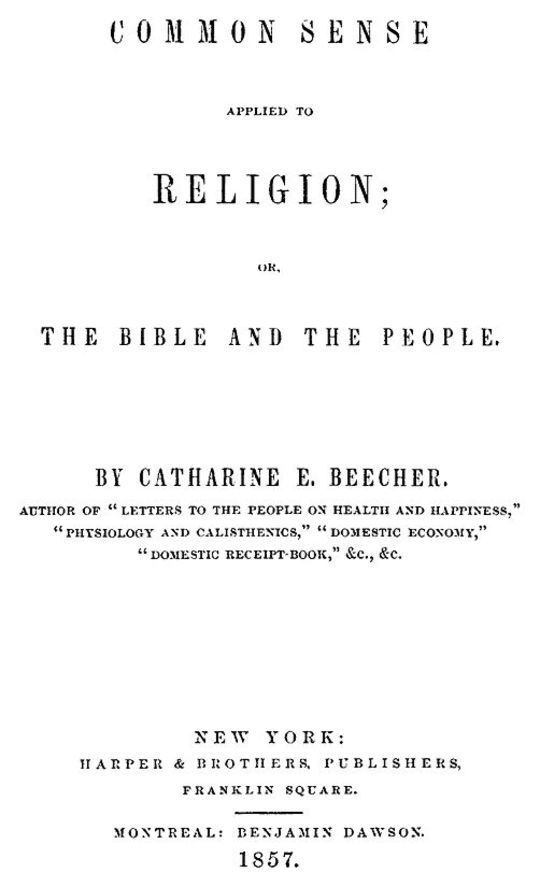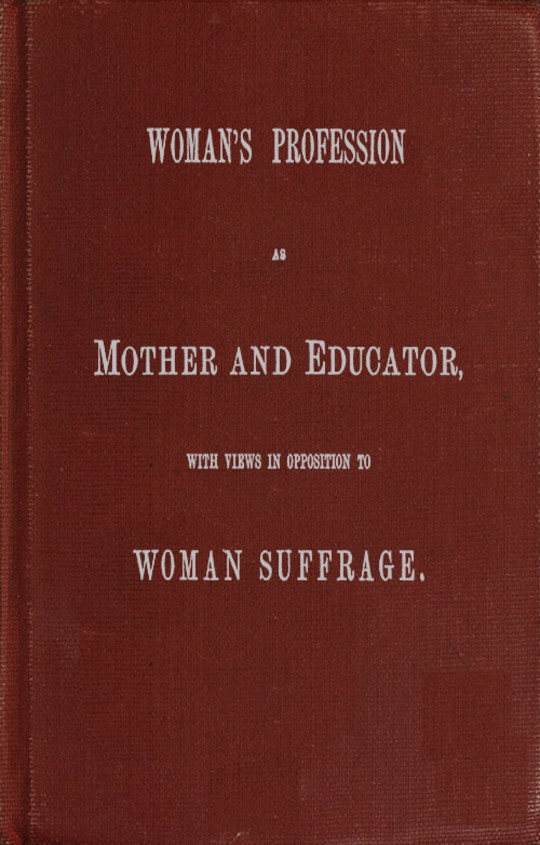
An Appeal to the People in Behalf of Their Rights as Authorized
Interpreters of the Bible
Free
Description
Contents
Reviews
Language
English
ISBN
Unknown
Contents
Chapter I. Introduction.
Chapter II. The Augustine Theory of the Origin of Evil.
The Augustinian Theory.
Chapter III. Questions Connected with the Augustinian Theory.
In what does the depraved nature transmitted from Adam consist?
Ability and Inability.
What is Regeneration?
What must we do to be saved?
True virtue, or right moral action.
Chapter IV. The Difficulties Involved in the Augustinian Theory.
The Catholic Method.
Mode of Augustine and of President Edwards.
The Princeton Mode.
The Constitutional Transmission Mode.
Condition of infants.
The difficulties not removed but rather increased by these methods.
Illustration of the Augustinian Theory.
Chapter V. The Augustinian Theory in Creeds.
Creed of the Catholic Church.
John Calvin.
Westminster Assembly.
The Episcopalians.
The Methodists.
Arminius.
Various Protestant doctrines.
Chapter VI. Modes of Meeting Difficulties by Theologians.
Augustine's Mode.
Princeton Mode.
Constitutional Transmission Mode.
Catholic Mode.
Chapter VII. Theologians Themselves Concede the Augustinian Dogmas Indefensible.
The Princeton Mode against the Catholic Mode.
The Transmission Mode against the Imputation Mode.
Dr. Woods in behalf of the Catholic Mode against the Constitutional Transmission Mode.
Chapter VIII. The Augustinian Theory Contrary to the Moral Sense of Mankind.
Julian to Augustine.
Dr. Watts.
Dr. Whelpley.
John Adams.
Dr. Channing.
John Foster.
Dr. Edward Beecher.
Chapter IX. The Principles of Common Sense Defined.
Chapter X. Common Sense Applied to Gain the Existence of God.
Every change has a producing cause.
Things are and will continue according to our past experience till there is evidence of a change.
Chapter XI. The People's Mental Philosophy.
Chapter XII. The Nature of Mind, or Its Powers and Faculties.
Intellectual Powers.
The Susceptibilities, or Feelings.
The Will.
Reason, or Common Sense.
Chapter XIII. Nature of Mind.—Regulation of the Thoughts.
Mode of regulating our thoughts.
Chapter XIV. Nature of Mind.—The Moral Sense, or Moral Susceptibilities.
Chapter XV. The Nature of Mind.—The Will.
Irrational Free Agency.
Rational Free Agency.
Subordinate and General Purposes.
On a Ruling Purpose or Chief End.
How the Thoughts, Desires and Emotions are controlled by the Will.
Chapter XVI. Constitutional Varieties of the Human Mind.
Chapter XVII. Nature of Mind.—Habit.
Chapter XVIII. The Nature of Mind Our Guide to the Natural Attributes of God.
Chapter XIX. The Nature of Mind Our Guide to the Moral Attributes of God.
Intellectual Powers.
The Susceptibilities.
Chapter XX. Additional Proof of the Moral Attributes of God.
Chapter XXI. Nature of Mind as Perfect in Construction.
Chapter XXII. Right and Wrong—True Virtue.
Right Actions and Rewardable Actions.
Right in Tendency and Right in Motive.
Right General Purpose.
Definitions.
Is True Virtue Possible before Regeneration?
Perfectness in Construction and Perfectness in Action and Character.
Common Sense Theory of the Origin of Evil.
Chapter XXIII. Laws and Penalties—Sin and Holiness.
Several Classes of Moral Actions.
Sin and Holiness.
Chapter XXIV. Love to God And Love to Man.
Chapter XXV. Increased Civilization Increases Moral Difficulties.
Chapter XXVI. Humility and Meekness.
Chapter XXVII. The Standard of Right and Wrong Decided by The Risks of Eternity.
Chapter XXVIII. The Destiny of Man in the Future Life.
Chapter XXIX. What Must We Do To Be Saved?
Chapter XXX. How Far Reason and Experience are Sufficient Without Revelation.
Chapter XXXI. Augustinian Creeds and Theologians Teach the Common-Sense System.
Chapter XXXII. Augustinian Creeds and Theologians Contradict the Common-Sense System, and Thus, Also, Contradict Themselves.
Chapter XXXIII. The Augustinian Theory Not In The Bible.
Interpretation of the Apostolic Age.
Augustinian Interpretation.
Princeton Interpretation.
Chapter XXXIV. A Reliable Revelation From The Creator Impossible If It Contains The Augustinian Theory.
Chapter XXXV. Tendencies of the Two Opposing Systems.
Chapter XXXVI. Tendencies of the Two Systems As They Respect the Cultivation of the Moral and Intellectual Powers.
Tendencies of the Two Systems in Regard to the Cultivation of the Reasoning Powers and Moral Sense.
Chapter XXXVII. Tendencies of the Two Systems in Respect to Individual Religious Experience.
Tendencies of the Common-Sense System.
Chapter XXXVIII. Tendencies of the Two Systems in Reference to the Character of God.
Chapter XXXIX. Tendencies of the Two Systems as to Church Organizations.
Chapter XL. Tendencies of the Two Systems in Regard to Humility, Meekness and a Teachable Spirit.
Chapter XLI. Tendencies of the Two Systems in Regard to Dogmatism, Persecution and Ecclesiastical Tyranny.
Chapter XLII. Tendencies of the Two Systems as Shown in Controversy and Sects.
Chapter XLIII. Practical Tendencies of the Two Systems.
Chapter XLIV. Tendencies of the Two Systems in the Training of Children.
Chapter XLV. The People Rejecting the Augustinian System.—Position of Theologians.
Present Position of Theologians.
Chapter XLVI. Present Position of the Church.
Chapter XLVII. State of the Pastors of Churches.
Chapter XLVIII. The Position of Popular Education.
Chapter XLIX. The Position of Woman as Chief Educator of Mind.
Chapter L. Present Position of Young America.
Chapter LI. Present Position of the Religious Press.
Chapter LII. The Present Position of the Secular Press.
Chapter LIII. What The People Will Do?
What Theologians will do?
What the Pastors will do?
What the Church will do?
What Women will do?
What Young America will do?
What the Religious Press will do?
What the Secular Press will do?
Note.
Notes.
Note A.
Note B.
Note C.
Note D.
Note E.
Note F.
Note G.
Footnotes
Credits
A Word from Project Gutenberg
The Full Project Gutenberg License
Section 1.
General Terms of Use & Redistributing Project Gutenberg™ electronic works
1.A.
1.B.
1.C.
1.D.
1.E.
1.E.1.
1.E.2.
1.E.3.
1.E.4.
1.E.5.
1.E.6.
1.E.7.
1.E.8.
1.E.9.
1.F.
1.F.1.
1.F.2.
1.F.3.
1.F.4.
1.F.5.
1.F.6.
Section 2.
Information about the Mission of Project Gutenberg™
Section 3.
Information about the Project Gutenberg Literary Archive Foundation
Section 4.
Information about Donations to the Project Gutenberg Literary Archive Foundation
Section 5.
General Information About Project Gutenberg™ electronic works.
The book hasn't received reviews yet.




